
Cast Iron Cap
Size: 40mm, 50mm, 60mm, 80mm, 100mm
Material: Cast Grey Iron
Application: Iron fence gate decoration
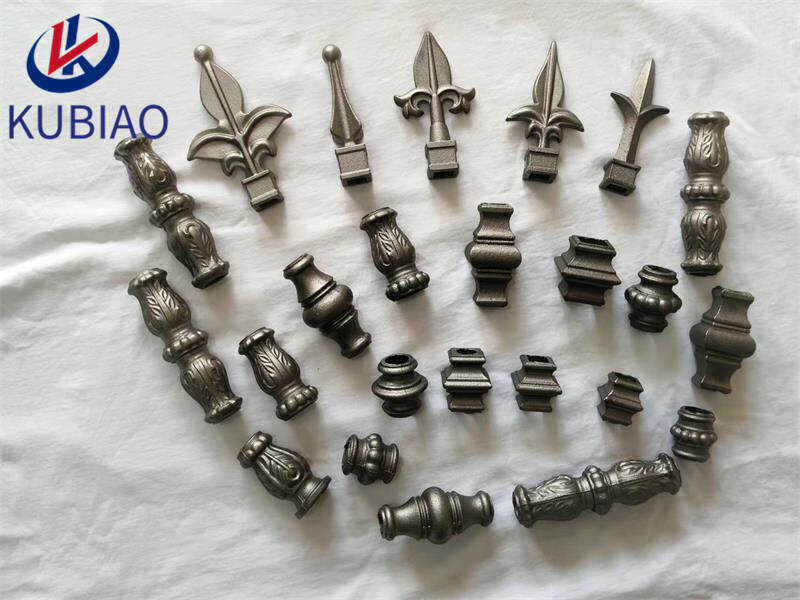
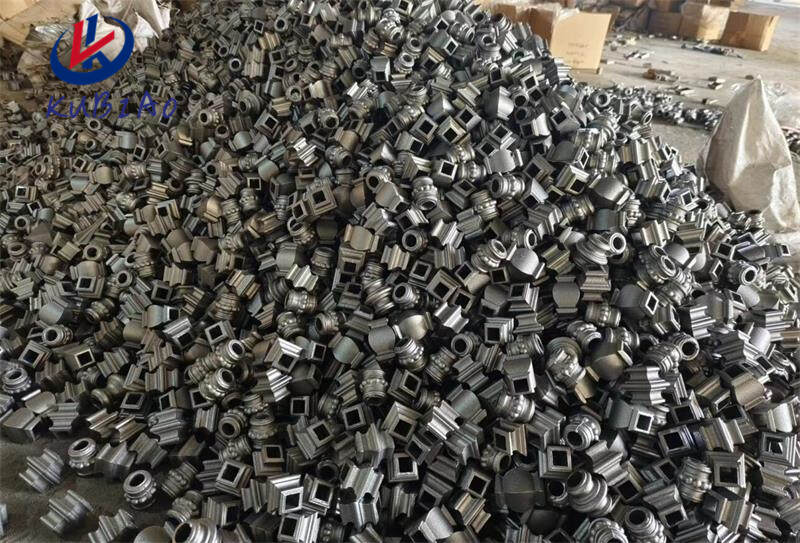
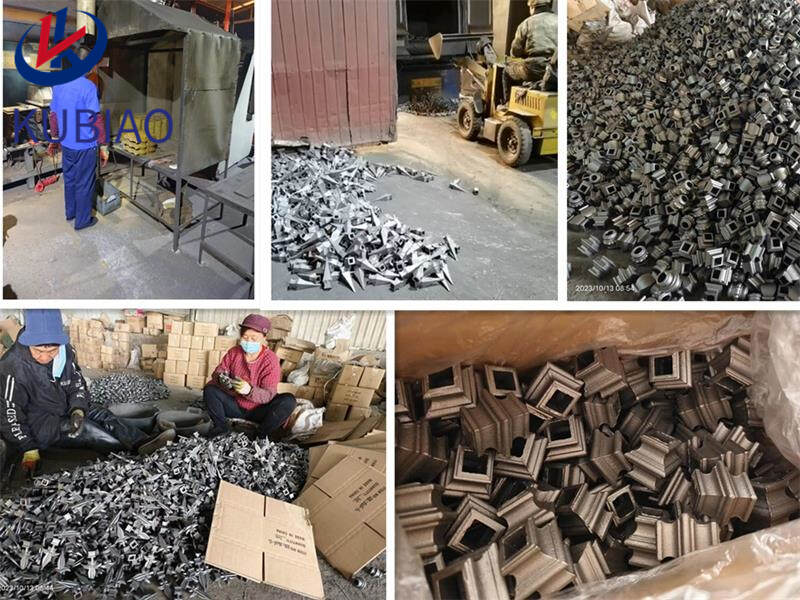
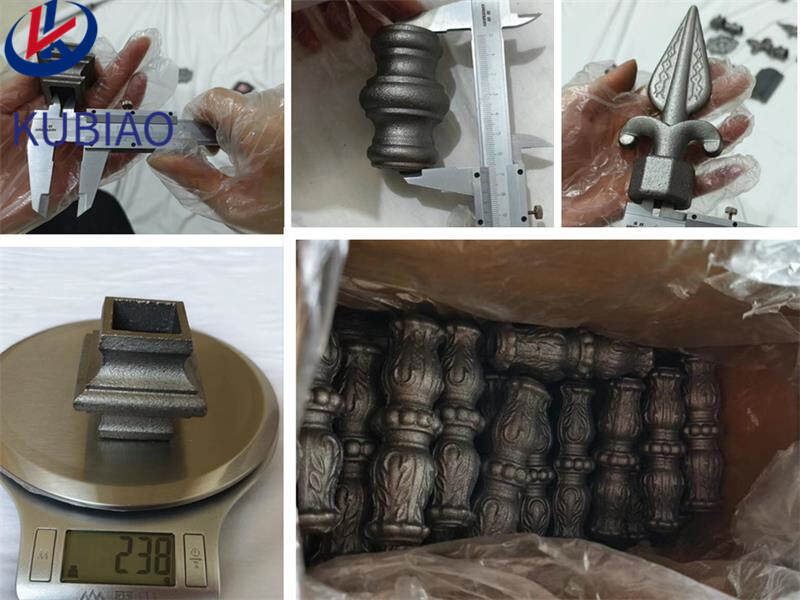
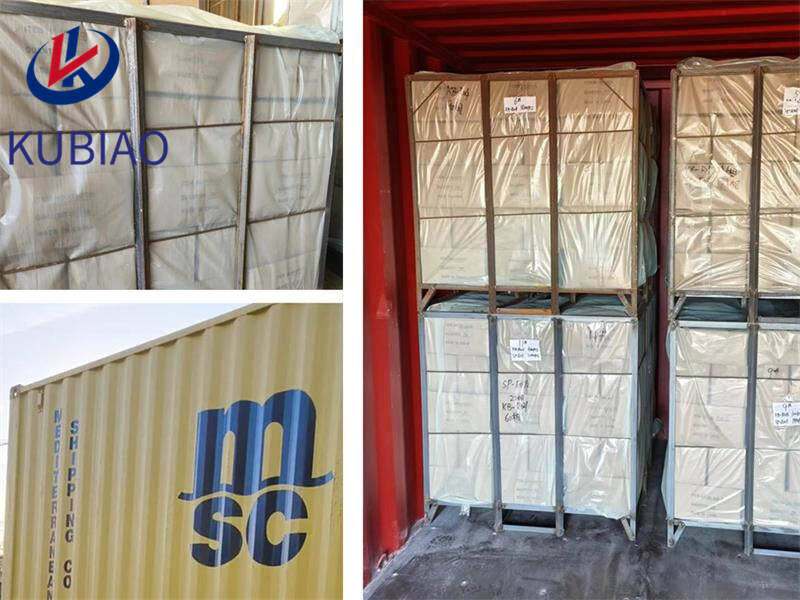
|
Product name |
cast iron post caps |
|
Keyword |
ornamental iron fence parts ,iron cast spears ,fence decorative collar,fence spears,fence accessories |
| Place of Origin | China |
|
Quality standard |
We have our own professional QC team to insure the quality. |
|
Feature |
Cast iron is a strong metal material that can withstand large amounts of pressure and weight. It is also durable and resistant to corrosion, making it ideal as a decorative item |
|
Application scope |
Outdoor, etc. |
|
surface treatment |
sand blasting antirust antirust oil/water painting hot dip galvanizing |
|
Unit Weight(g) |
513(Contact us for specific information to confirm) |
|
terms of payment |
50% T/T in advance, balance before shipment. |
|
Life span |
26 years (Contact us for specific information to confirm) |
|
delivery time |
It usually takes 40 days. |
|
Advantage |
We keep good quality and competitive price to ensure our customers benefit |
|
Packing |
16x9.63x12.4cm(Contact us for specific information to confirm) |
|
OEM/ODM |
Customization Service Provided |
|
design |
beautiful elegance sleek pretty |
|
Sales country |
All over the world for example:Kiribati,Qatar,Georgia,Christmas Island,Benin,Malawi,Sudan,Spratly Islands |
|
MOQ |
209pcs(Contact us for specific information to confirm) |
1.Are cast iron post caps heavy?
We have rich industry experience and professional knowledge, and have strong competitiveness in the market.
Yes, cast iron ornaments are typically heavy due to the density and weight of the material. They can range in weight from a few pounds to several hundred pounds, depending on the size and design of the ornament.
2.Are there any DIY techniques for creating my own cast iron post caps?
We have a good reputation and image in the industry. The quality and price advantage of cast iron post caps products is an important factor in our hard overseas market.
1. Sand Casting: This method involves creating a mold using sand and pouring molten cast iron into it. You can use a wooden pattern or a 3D printed mold to create intricate designs. Once the iron has cooled and solidified, the sand can be removed to reveal the ornament.
2. Clay Casting: Similar to sand casting, this method involves creating a mold using clay instead of sand. The clay can be molded into any shape or design and then coated with a layer of sand before pouring in the molten iron. Once cooled, the clay can be removed to reveal the ornament.
3. Lost Wax Casting: This technique involves creating a wax model of the ornament and then coating it with a layer of ceramic. The wax is then melted out, leaving a hollow ceramic mold. Molten iron is then poured into the mold and once cooled, the ceramic can be broken away to reveal the ornament.
4. Repurposed Molds: You can also use existing objects such as cookie cutters, silicone molds, or even household items like bottle caps or keys to create unique cast iron ornaments. Simply pour the molten iron into the mold and let it cool before removing the ornament.
5. Sandpaper Etching: If you don't have access to molten iron, you can still create a cast iron look by using sandpaper to etch designs onto a piece of metal. You can then paint the metal with a rust-colored paint to give it an aged look.
6. Welding: If you have some welding skills, you can create your own cast iron ornaments by welding together pieces of scrap metal. You can use a grinder to smooth out any rough edges and give it a more polished look.
7. 3D Printing: If you have access to a 3D printer, you can design and print your own cast iron ornaments using a special filament that contains iron particles. Once printed, the ornament can be heated to fuse the iron particles together, giving it a cast iron appearance.
Remember to always take proper safety precautions when working with molten iron or welding equipment. It is also important to properly dispose of any leftover materials and follow local regulations for metalworking.
3.Are there any famous artists or designers known for their cast iron post caps?
We have the leading technology and innovation capabilities, and attach importance to employee training and development, and provide promotion opportunities.
1. Thomas Jefferson
2. Gustave Eiffel
3. Antoni Gaudí
4. Louis Sullivan
5. Hector Guimard
6. Daniel Chester French
7. Augustus Saint-Gaudens
8. John Flanagan
9. René Lalique
10. Louis Comfort Tiffany
4.Can I use cast iron post caps as part of a fireplace mantel display?
We continue to invest in research and development and continue to launch innovative products.
Yes, you can use cast iron ornaments as part of a fireplace mantel display. Cast iron ornaments can add a rustic and vintage touch to your mantel display and can be used to hold candles, vases, or other decorative items. Just make sure to properly secure them to the mantel to prevent any accidents.
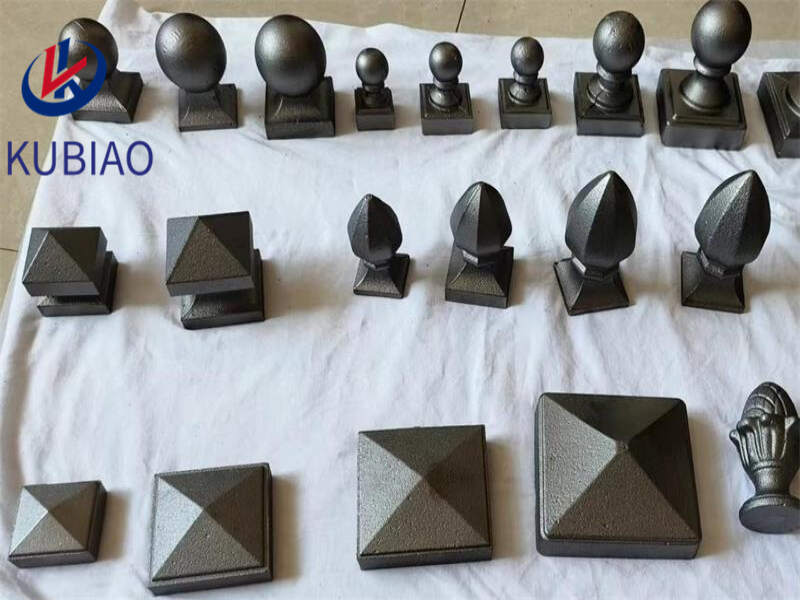
5.What are the cost differences between cast iron post caps and other types of decorations?
I have a comprehensive after -sales service system, which can pay attention to market trends in time and adjust our strategy in a timely manner.
The cost differences between cast iron ornaments and other types of decorations can vary depending on the specific item and where it is purchased. Generally, cast iron ornaments tend to be more expensive than other types of decorations such as plastic or resin ornaments. This is because cast iron is a more durable and high-quality material that requires more labor and resources to produce. Additionally, cast iron ornaments often have intricate designs and details that add to their cost. On the other hand, plastic or resin ornaments are typically mass-produced and can be made at a lower cost, resulting in a lower price point. Ultimately, the cost differences between cast iron ornaments and other types of decorations will depend on the specific product and its features.
6.What are the differences between cast iron post caps and other metal decorations?
We have advantages in marketing and channel expansion. Suppliers have established good cooperative relations, continuously improved workflows, improved efficiency and productivity, and provided customers with high -quality products and services.
1. Material: The main difference between cast iron ornaments and other metal decorations is the material used. Cast iron ornaments are made from iron that has been melted and poured into a mold, while other metal decorations can be made from a variety of metals such as aluminum, brass, copper, or steel.
2. Weight: Cast iron ornaments are typically heavier than other metal decorations due to the density of iron. This can make them more durable and less likely to be blown over by strong winds.
3. Strength: Cast iron is known for its strength and durability, making cast iron ornaments more resistant to damage and wear compared to other metal decorations.
4. Rust resistance: Cast iron is prone to rusting, so cast iron ornaments may require regular maintenance to prevent rust. Other metal decorations, such as aluminum or stainless steel, are more resistant to rust and may require less maintenance.
5. Design options: Cast iron ornaments are limited in terms of design options due to the casting process. Other metal decorations can be formed into more intricate and detailed designs using techniques such as welding, bending, and cutting.
6. Cost: Cast iron ornaments tend to be more expensive than other metal decorations due to the cost of the materials and the labor-intensive casting process.
7. Versatility: Other metal decorations can be used both indoors and outdoors, while cast iron ornaments are primarily used for outdoor decor due to their weight and rust-prone nature.
8. Historical significance: Cast iron has been used for centuries in architectural and decorative elements, giving cast iron ornaments a sense of history and tradition that other metal decorations may not have.
7.What are some popular uses for cast iron post caps?
We should perform well in market competition, and the prices of cast iron post caps products have a great competitive advantage.
1. Garden Decorations: Cast iron ornaments are commonly used as garden decorations, such as planters, statues, and bird baths.
2. Home Decor: Cast iron ornaments can add a touch of elegance and charm to any room in the house. They can be used as wall hangings, bookends, or as decorative accents on shelves and tables.
3. Architectural Details: Cast iron ornaments are often used as architectural details on buildings, such as door knockers, window grills, and balcony railings.
4. Fireplace Accessories: Cast iron ornaments can be used as fireplace accessories, such as firebacks, grates, and tool sets.
5. Furniture Accents: Cast iron ornaments can be incorporated into furniture design, such as table legs, chair backs, and drawer pulls.
6. Signage: Cast iron ornaments can be used as decorative elements on signs, both indoors and outdoors.
7. Holiday Decorations: Cast iron ornaments are popular for holiday decorations, such as Christmas tree ornaments and Halloween decorations.
8. Souvenirs and Gifts: Cast iron ornaments make unique and memorable souvenirs and gifts, as they can be personalized and have a timeless appeal.
9. Collectibles: Cast iron ornaments are often collected by enthusiasts for their historical and artistic value.
10. DIY Projects: Cast iron ornaments can be used in various DIY projects, such as creating custom wall art, jewelry, and home accents.
8.How are cast iron post caps made?
We continue to improve cast iron post caps products and processes to improve efficiency.
1. Creating a Design: The first step in making cast iron ornaments is to create a design. This can be done by hand-drawing or using computer-aided design (CAD) software.
2. Making a Mold: Once the design is finalized, a mold is created. This can be made from wood, metal, or other materials. The mold is usually made in two halves, with the design carved or etched into it.
3. Preparing the Iron: Cast iron is made by melting iron and adding other elements such as carbon, silicon, and manganese to create a strong and durable material. The iron is heated in a furnace until it reaches a molten state.
4. Pouring the Iron: Once the iron is molten, it is poured into the mold. The mold is usually preheated to prevent the iron from cooling too quickly and to ensure a smooth finish.
5. Cooling and Removal: The iron is left to cool and solidify in the mold. Once it has cooled, the mold is opened and the cast iron ornament is removed.
6. Finishing: The cast iron ornament may have rough edges or imperfections from the casting process. These are removed by grinding, sanding, or filing. The ornament may also be polished or painted to achieve the desired finish.
7. Inspection: The finished ornament is inspected for any defects or imperfections. Any necessary touch-ups or repairs are made at this stage.
8. Packaging and Shipping: The final step is to package the cast iron ornament for shipping or display. This may involve adding protective packaging or attaching hanging hardware if necessary.
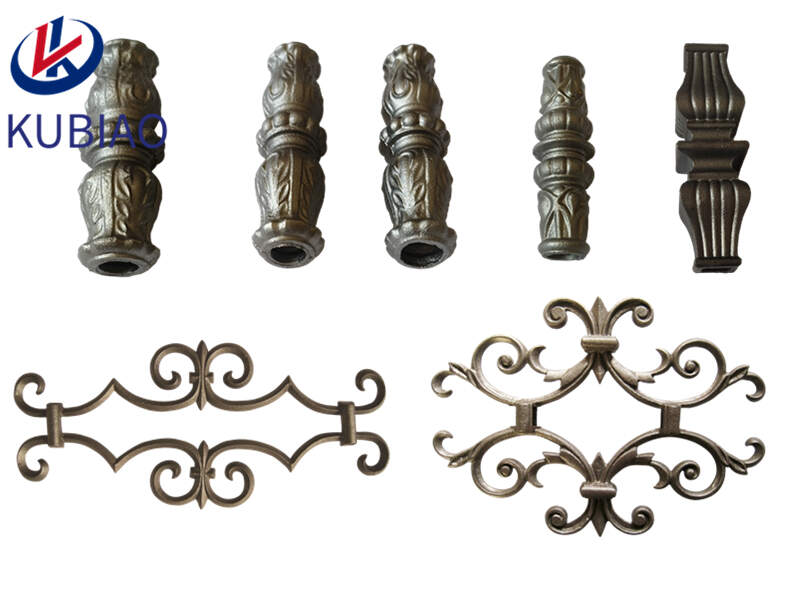
9.What are some common misconceptions about cast iron post caps?
Being one of the top cast iron post caps manufacturers in China, We attach great importance to this detail.
1. They are fragile: Many people assume that cast iron ornaments are delicate and can easily break. However, cast iron is a strong and durable material that can withstand harsh weather conditions and heavy use.
2. They are expensive: While some cast iron ornaments may be pricey, there are also many affordable options available. Additionally, their durability and longevity make them a cost-effective choice in the long run.
3. They are only suitable for traditional or rustic styles: Cast iron ornaments are often associated with traditional or rustic decor, but they can also add a touch of elegance and sophistication to modern or contemporary spaces.
4. They are difficult to maintain: Some people believe that cast iron ornaments require a lot of maintenance and upkeep. However, with proper care and occasional cleaning, they can last for many years without any issues.
5. They are all the same: Cast iron ornaments come in a variety of designs, sizes, and finishes. They can be intricately detailed or simple and sleek, making them suitable for different styles and preferences.
6. They are only for outdoor use: While cast iron ornaments are commonly used in outdoor spaces, they can also be used indoors to add a unique and decorative touch to any room.
7. They are heavy and difficult to install: While cast iron ornaments can be heavy, they are not necessarily difficult to install. Many come with mounting hardware or can be easily hung with screws or nails.
8. They are only for decorative purposes: While cast iron ornaments are often used for decorative purposes, they can also serve functional purposes such as supporting plants or serving as bookends.
9. They are prone to rust: While cast iron can rust if not properly cared for, many modern cast iron ornaments are coated with a protective finish to prevent rusting.
10. They are outdated: Cast iron ornaments have been used for centuries and have stood the test of time. They continue to be a popular choice for home decor, making them far from outdated.
Welcome to contact us for Cast Iron Order!
Email: sales@kubiaometal.com
Cellphone/Whatsapp: 0086 13020588163
Wechat: 13028588163
Tag:casting spearheads,cast iron ornamental castings ,decorative spear point ,ornamental iron gate part,fence casting spear,cast iron fence ornamental ,cast iron spear points,cast iron end cap
PREV: casting bases
Product
Category